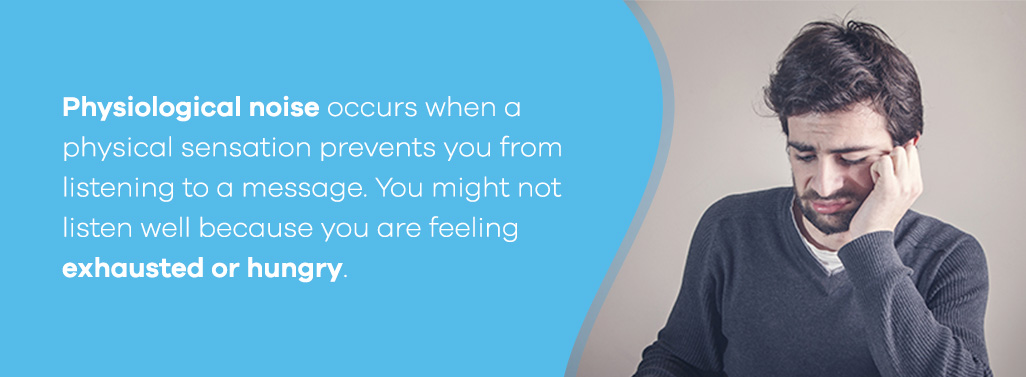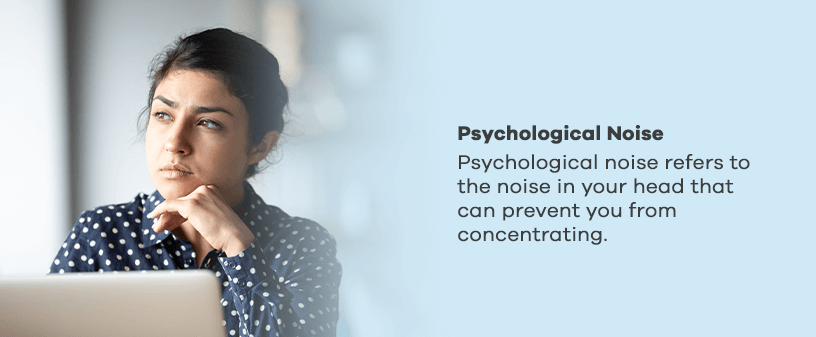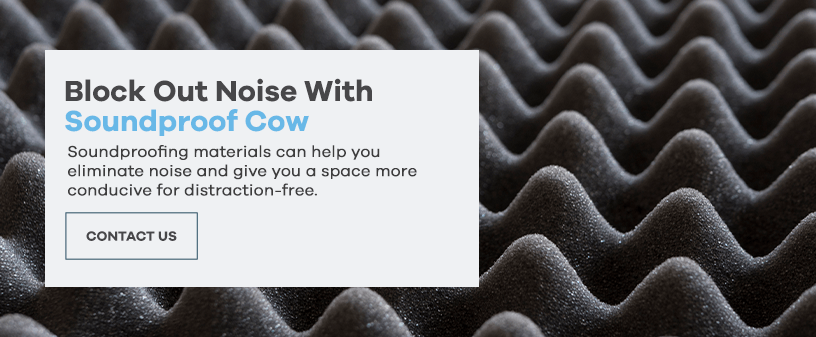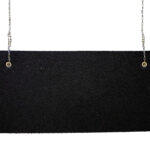
No one wants to ask someone to repeat themselves for the fourth time in a row when chatting in a noisy room or strain to hear a phone call over the background noise on the other end. Noise can have a significant impact on the way we communicate with one another. Whether it’s in an office or industrial workplace or at home, noise can prevent us from getting our message across effectively to those around us. Find out exactly how noise affects communication, the different types of noise that affect communication, and how to reduce noise to improve communication.
What Is Communication Noise?
Communication noise can be defined as any barrier preventing an effective communication process. When a form of noise disrupts the communication process from the sender to the receiver, it is considered communication noise.
The noise might distract the receiver, causing them not to hear the sender’s message properly. Or it might distract the sender, making it difficult for them to communicate the message effectively. Either way, noise becomes a barrier to communication. Communication noise can be found in almost all settings and contexts, including face-to-face, groups and organizational settings. Studies have shown that in organizational settings specifically, businesses have lost billions of dollars because of communication noise.
Types of Noise Which Can Affect Communication
Not all noise is created equal. There are several types of noise during communication that can make it more difficult to understand the other things going on around you. How noise is a barrier to communication depends on the specific type of noise. Read on to learn more about the different types of noise in communication.
Physical Noise
Physical noise includes the sounds created around you every day. Any disturbance or interference that is coming from an external source is considered a form of physical noise. It occurs externally and may distract you from what you are trying to hear. For instance, someone whispering in a classroom can disrupt a presentation given by a teacher. Other examples of physical noise include:
- A baby crying when they wake up from a nap.
- A concert taking place outside.
- Loud music playing in a passing car.
- The noise of an airplane flying over the building.
- Static on a call.
- People talking during a meeting.
Physical noise can also be non-auditory. For instance, someone making a gesture and distracting you might cause you not to receive the message. This is visual noise, another form of physical noise.
Physiological Noise
Physiological noise occurs when you encounter a barrier to hearing. It could be a barrier you create, or it may be an issue with another person speaking. Physiological noise is any physiological issue or health state that interferes with you paying attention to the message being communicated to you. It encompasses physical problems such as being hard of hearing or not being able to differentiate low noises. Other kinds of physiological noise include:
- Talking too fast or too slow.
- Not pausing to breathe while speaking.
- Having trouble articulating a thought or mumbling.
Psychological Noise
Psychological noise refers to the noise in your head that can prevent you from concentrating. It may include wandering thoughts, like switching topics too quickly, making it difficult for the listener to follow your narrative. People who think they know something already also have psychological noise in their heads. Other examples include:
- Closed-mindedness that leads you to discount ideas.
- Sarcasm when someone disagrees with your views.
- Thinking about an unrelated topic during a conversation.
Psychological noise can also stem from differences between individuals’ personal views, attitudes, assumptions and biases. Because people see and understand the world in different ways, they might misinterpret the language used, content, perceived beliefs or attitude of the messenger during communication. As a result, the receiver might not understand the message the way it was intended to be communicated.
Semantic Noise
Semantic noise occurs when people try to communicate about something but lack the common background or knowledge to share ideas effectively. They may have different primary languages or rely on a separate dialect. Sometimes cross-cultural communications can result in semantic noise and add to misunderstandings. Additional examples include:
- Using jargon that another person misunderstands or isn’t familiar with.
- Misinterpreting body language, such as eye contact or voice tone.
- Speaking words that can have two different meanings.
Cultural Noise
People can belong to many different cultures or cultural groups. Some of these include nationality, region, social position, gender, age and careers. Because every individual is a member of unique cultural groups, their values, beliefs, attitudes and expectations also differ. This can often lead to cultural noise as the messenger might not communicate the message in the best way for the receiver to understand it due to cultural differences.
Technical Noise
Technical noise is anything technical that prevents the audience from hearing, receiving and understanding a message clearly. This can include any technical issues like slow connectivity, down servers, or issues with technical equipment like web cameras or microphones.
Organizational Noise
Organizational noise happens when a business organization has a structure that impedes certain communication channels. In some organizations, these communication channels are structured to ensure team members know exactly which members they should be communicating with. However, when this is not clearly outlined and you are not aware of or you disregard the correct communication channels in your organization, the message can get lost. And this is when organizational noise occurs.
How to Overcome Communication Barriers
Because of its ability to disrupt or obscure a message, noise tends to be one of the most common communication barriers. To overcome noise barriers, you must establish precisely what the source is. Often, this can be the most difficult part as it’s not always clear where exactly the noise is coming from. But only once the source has been determined can you make a plan to overcome it. Along with the source of the noise, establish the type of noise so you can determine the best way to overcome it.
For example, if it’s physical noise, try to remove as many of the physical distractions as possible. This could mean removing phones from meeting rooms or closing all doors and windows. If the noise is technical, ensure that all technical equipment works properly in advance and have back-ups in place.
The best way to overcome communication barriers and ensure that messages are received and understood clearly is to plan ahead. Eliminate as many of the objects that could possibly cause noise prior to communication. And prepare for any other factors that might pop up or interfere with the message during communication.
Impacts of Communication Noise
Clearly, communication noise can have a profound impact on someone’s ability to hear and understand messages. It can make it difficult to focus and cause people to miss out on important information or instructions. Communication noise can also lead to even more significant social consequences for individuals who struggle with hearing loss.
Not being able to hear what’s being communicated clearly can compromise their safety. In addition, noise can lead to health issues, decrease employee productivity, compromise privacy and confidentiality, prevent children from learning effectively and prevent older adults from participating in social settings.
Block Out Noise With Soundproof Cow
Soundproofing materials can help you eliminate noise and give you a space more conducive for distraction-free presentations, performances, conversations or classes. Soundproof Cow has tools to help you do it. Browse our soundproofing materials, including insulation, hanging baffles and door seals. Feel free to get in touch with us with any questions













